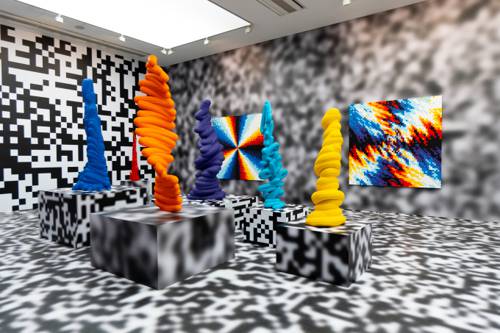
FAQ About The Role of Immersive Experiences in Contemporary Art

What are immersive experiences in contemporary art?
Immersive experiences in contemporary art refer to art installations or exhibits that engage audiences through technologies like Virtual Reality (VR), Augmented Reality (AR), or other interactive elements, creating an environment that the audience can enter physically or virtually. These experiences aim to engage multiple senses, allowing the viewer to interact with the art in novel ways, enhancing perception and emotional connection.

How do VR and AR enhance audience engagement in art installations?
VR and AR enhance audience engagement by transforming passive observation into active participation. VR provides a wholly immersive experience, transporting viewers to a different reality where they can move and interact with virtual elements. AR, on the other hand, overlays digital components onto the real world, allowing audiences to interact with both real and virtual elements simultaneously. These technologies offer new layers of interaction and interpretation, deepening the audience's connection to the artwork.

Can immersive experiences change the way art is perceived?
Yes, immersive experiences can significantly change the way art is perceived by shifting the focus from viewing to experiencing art. By engaging multiple senses, these experiences can alter emotional and cognitive responses, providing a new dimension to understanding and interpreting artworks. Immersive art often encourages a personal and participatory experience, which can lead to unique, individualized interpretations.

What are some examples of immersive art installations?
Some notable examples of immersive art installations include TeamLab Borderless, an interactive digital art museum in Tokyo, which utilizes light projections and motion sensors. Another example is "The Night Cafe," a VR experience that allows viewers to explore a three-dimensional version of Vincent van Gogh's famous painting. These installations leverage technology to create enveloping environments that engage viewers in innovative ways.

How do artists create immersive art experiences?
Artists create immersive art experiences by integrating technology such as VR, AR, sound, light, or motion sensors into their artworks. This often involves interdisciplinary collaboration with technologists, designers, and engineers to develop interactive elements that engage viewers. Artists consider how these technologies can alter perceptions of space and form, and how they can guide narrative or thematic interpretations.

What role does technology play in contemporary art?
Technology plays a crucial role in contemporary art by offering new mediums and tools for expression. It enables artists to explore dynamic and interactive forms of art, breaking traditional boundaries. Technologies like VR and AR allow for the creation of immersive environments, expanding the potential for audience interaction and engagement. Additionally, technology can aid in the creation of digital art forms, expanded exhibitions, and global accessibility to art.

Are immersive art experiences suitable for everyone?
While immersive art experiences can offer transformative and engaging interactions for many, they may not be suitable for everyone. Some individuals may experience discomfort or disorientation, particularly with VR due to motion sickness or sensory overload. It is important for creators to consider these factors and provide options or accommodations, such as allowing for shorter interactions or creating alternative versions of the experience.

How do immersive experiences differ from traditional art exhibits?
Immersive experiences differ from traditional art exhibits primarily in their approach to audience interaction. While traditional exhibits typically involve passive viewing of artworks, immersive installations encourage active participation and engagement through technology and interactive elements. This shift transforms the viewer's role from observer to participant, often leading to a more personalized and impactful experience.

What is the impact of immersive art on the art industry?
Immersive art is impacting the art industry by broadening the scope of creative possibilities and engaging new audiences. It encourages interdisciplinary collaboration, integrates cutting-edge technology, and creates unique art forms that defy traditional categorizations. Furthermore, it can attract diverse demographics, fostering wider appreciation and understanding of art and innovation in the industry.

How do immersive technologies influence the creative process for artists?
Immersive technologies influence the creative process by offering artists new tools and mediums to explore concepts and stories. These technologies can inspire novel approaches to art-making, enabling artists to conceptualize and execute complex interactive and immersive experiences. The potential for audience interactivity also shifts the focus of the creative process towards the viewer's experience and engagement.
